Key Takeaways
-
Local lenders provide Minnesota market expertise and personal relationships. They understand neighborhood trends, have established connections with local real estate professionals, and offer face-to-face guidance that’s especially valuable for first-time buyers or complex financial situations.
-
Online lenders typically offer lower rates and 24/7 digital convenience. With reduced overhead costs and streamlined technology platforms, online lenders often provide more competitive pricing and allow you to complete applications, upload documents, and track progress anytime from anywhere.
Your financial profile should guide your choice. Borrowers with straightforward W-2 income and excellent credit benefit from online lenders’ efficiency and rates, while self-employed buyers or those with complex documentation need local lenders’ flexible underwriting and personal advocacy.
-
In competitive Minnesota markets, local lender reputations matter. Real estate agents and sellers often favor offers backed by local lenders with proven track records of reliable, on-time closings—giving you an edge in bidding situations.
-
Always compare actual costs, not just advertised rates. Request Loan Estimates from both local and online lenders to compare APR and total closing costs. The lowest advertised rate doesn’t always translate to the best overall deal.
-
Hybrid lenders offer the best of both worlds. Many Minnesota-based lenders now combine local expertise and personal service with modern digital tools and competitive pricing, eliminating the need to choose between convenience and relationships.
-
First-time buyers typically benefit more from local lenders. The educational support, hand-holding through unfamiliar processes, and ability to ask questions face-to-face provide valuable reassurance during your first home purchase.
Comparing Lenders and Loan Options in MN
Choosing the right mortgage lender can save you thousands of dollars and prevent major headaches during your home purchase. With numerous lenders competing for your business across Minnesota, knowing how to compare your options is essential.
This guide cuts through the complexity and shows you exactly what to look for when evaluating lenders and loan programs in the North Star State.
Why Shopping Around Actually Matters
Many Minnesota buyers accept the first mortgage offer they receive—often from their bank or a friend’s recommendation. This can be a costly mistake.
The difference between lenders goes beyond interest rates. It includes processing speed, communication quality, available loan programs, and ability to close on time. In hot markets like the Twin Cities, a lender’s reputation can even influence whether sellers accept your offer.
Shopping around isn’t just smart—it’s necessary. Even a 0.25% rate difference on a $300,000 mortgage costs you over $15,000 in extra interest over 30 years.
Key Factors to Compare When Evaluating Lenders
Interest Rate vs. APR: Know the Difference
The interest rate determines your monthly payment, but the Annual Percentage Rate (APR) tells the real story. APR includes origination fees, discount points, mortgage insurance, and other lender charges.
A lender advertising a low interest rate might be more expensive overall when you examine the APR. Always compare both numbers to understand true costs.
Loan Products and Program Options
Not all lenders offer the same loan programs. Some specialize in conventional mortgages for well-qualified buyers, while others excel with FHA or USDA loans for first-time buyers.
A quality lender evaluates your situation and presents multiple options with honest pros and cons—not just pushes you toward one product.
Communication and Customer Service
You’ll communicate constantly with your lender during the mortgage process. Responsiveness, transparency, and accessibility matter tremendously.
Look for lenders who provide clear timelines, proactive updates, and easy access when questions arise. In competitive Minnesota markets, responsive communication can mean securing your dream home instead of losing it.
Closing Speed and Reliability
Some lenders close loans in three weeks; others take six weeks or longer. In competitive bidding situations, speed matters.
Minnesota real estate agents often maintain lists of reliable lenders known for on-time closings. Ask your agent which lenders have strong track records.
Local Lenders vs. National Banks: What’s the Difference?
Advantages of Minnesota-Based Lenders
Local lenders have established relationships with area appraisers, title companies, and real estate agents. This network facilitates smoother transactions and faster problem resolution.
They also understand Minnesota’s housing markets intimately—from property tax systems to which rural areas qualify for USDA financing. This expertise proves invaluable during complex transactions.
Local lenders often have more flexibility in underwriting decisions, finding creative solutions for borrowers who don’t fit the standard mold.
Benefits of National Banks
Larger banks often offer slightly lower rates due to greater capital access. Their streamlined digital processes appeal to tech-savvy borrowers who prefer online document submission.
National lenders may provide broader product lines, including specialized jumbo loans or unique adjustable-rate products.
However, they typically lack the personal touch and local expertise that many Minnesota buyers value.
Finding Your Best Fit
Get quotes from both local and national lenders. This lets you compare rates while evaluating service quality and local market knowledge. Many buyers discover that Minnesota-based lenders offer competitive rates with superior service.
Understanding Your Minnesota Loan Options
Conventional Loans
The most popular choice for buyers with good credit (620+) and stable income. Conventional loans offer flexibility in down payments (as low as 3%) and competitive rates. Put down 20% or more to avoid private mortgage insurance (PMI).
Best for: Buyers with solid credit and financial profiles.
FHA Loans
Government-backed loans allowing down payments as low as 3.5% and credit scores as low as 580. FHA loans require mortgage insurance premiums but provide accessible financing for first-time buyers.
Best for: First-time buyers or those with less-than-perfect credit.
VA Loans
Available to eligible veterans, active-duty service members, and qualifying family members. VA loans offer zero down payment, no PMI, and competitive rates with lenient credit requirements.
Best for: Minnesota’s military community and veterans.
USDA Loans
Zero-down-payment mortgages for rural and suburban properties in eligible areas. Many communities near Minneapolis-St. Paul, Rochester, and Duluth qualify despite the “rural” designation.
Best for: Buyers open to locations outside urban cores.
Jumbo Loans
For high-value properties exceeding conforming loan limits (around $766,550 in most Minnesota counties). Require excellent credit (typically 700+) and larger down payments (10-20%).
Best for: Luxury home buyers and lakefront property purchases.
Fixed-Rate vs. Adjustable-Rate Mortgages
Fixed-Rate Mortgages
Your interest rate and payment stay constant for the entire loan term. The 30-year fixed-rate offers the lowest monthly payments, while 15-year terms build equity faster with lower total interest costs.
Fixed-rate mortgages provide budget predictability and protection against rising rates.
Adjustable-Rate Mortgages (ARMs)
ARMs offer lower initial rates that adjust after a fixed period (typically 5, 7, or 10 years). They make sense if you plan to sell or refinance before rates adjust.
However, payments can increase significantly when rates adjust. Examine caps limiting rate increases before choosing an ARM.
Discount Points and Fees
Discount points let you “buy down” your rate by paying upfront fees. Each point costs 1% of your loan amount and typically reduces your rate by about 0.25%.
Points make sense if you’ll keep the loan long enough to recoup upfront costs through monthly savings.

How Credit Scores Affect Your Options
Your credit score dramatically influences available lenders and rates:
Excellent (740+): Access to best rates and broadest loan options. Minimal documentation hurdles.
Good (680-739): Favorable terms with slightly higher rates than top-tier borrowers. Shop multiple lenders for best pricing.
Fair (620-679): Limited conventional options, but FHA, VA, and some portfolio loans remain accessible. Higher rates and larger down payments may be required.
Below 620: Significantly limited options. FHA loans may work with scores as low as 580. Consider improving credit before purchasing to save thousands in interest.
Many Minnesota lenders offer free credit counseling to help improve your score before applying.
Comparing Loan Estimates: Your Side-by-Side Tool
Federal law requires lenders to provide a standardized Loan Estimate within three business days of your application. Request estimates from multiple lenders for identical loan scenarios.
What to Compare
Page 1: Interest rate, monthly payment, and whether rates can change. Check for prepayment penalties or balloon payments.
Page 2: Itemized closing costs including origination charges, third-party fees, taxes, and prepaid costs. Total closing costs matter more than individual line items.
Page 3: Cash required at closing, including down payment and closing costs minus any credits.
Focus on APR and total closing costs to identify the best overall deal.
Minnesota-Specific Programs Worth Exploring
Minnesota Housing Finance Agency (MHFA)
Start Up: Helps first-time buyers with down payment and closing cost assistance. Available statewide with generous income limits.
Step Up: Serves repeat buyers who haven’t owned homes in three years. Provides financial assistance and favorable rates.
MHFA also offers targeted programs for veterans, teachers, police officers, and healthcare workers.
Local Down Payment Assistance
Minneapolis, St. Paul, and many suburban communities offer localized assistance programs. These often provide forgivable loans or grants reducing upfront costs.
Your lender should know about local programs and help you navigate applications.
Mortgage Credit Certificate (MCC)
Minnesota’s MCC program converts mortgage interest into a dollar-for-dollar tax credit, potentially putting hundreds or thousands back in your pocket annually. Income and price limits apply.
Checking Lender Reputation and Credentials
Verify Licenses
Check lender licenses and regulatory history through the Nationwide Multistate Licensing System (NMLS) Consumer Access website. Verify both company and individual loan officer credentials.
Read Reviews and Get Referrals
Look for patterns in online reviews regarding communication, transparency, and timely closings. Ask friends, family, and real estate agents about their experiences.
Use referrals as starting points, not substitutes for your own comparison shopping.
Watch for Red Flags
Be cautious of lenders who:
- Pressure you to lock rates before comparing options
- Refuse to provide written Loan Estimates
- Offer rates significantly lower than competitors without explanation
- Communicate poorly or are difficult to reach
- Give vague answers about fees
- Suggest misrepresenting information on applications
Making Your Final Choice: Rate vs. Service
The lowest rate doesn’t always identify the best lender. Consider the total package.
Your Comparison Checklist
Evaluate each lender on:
- Interest rate and APR
- Total closing costs
- Available loan programs matching your needs
- Communication quality
- Closing speed and reliability
- Local market knowledge
- Reviews and reputation
- Minnesota program availability
Create a simple scoring system to prevent fixating solely on rates while ignoring service quality.
Critical Questions to Ask
Before committing, ask:
- What’s your average time from application to closing?
- How often do your loans close on time?
- Who will be my main contact?
- What documentation will I need?
- Do you offer rate locks, and for how long?
- What if rates drop after I lock?
Quality lenders welcome these questions and provide clear answers.
Get Pre-Approved, Not Just Pre-Qualified
Pre-qualification is an informal estimate. Pre-approval involves documentation verification and credit checks, providing a conditional commitment to lend.
In Minnesota’s competitive markets, pre-approval letters carry significantly more weight with sellers.
Your Action Plan for Comparing Minnesota Lenders
Follow this straightforward process:
- Check your credit and assess which loan programs you’ll qualify for
- Contact at least three lenders: a local Minnesota lender, a regional bank, and a national option
- Request Loan Estimates for identical scenarios
- Interview loan officers to evaluate communication and expertise
- Verify licenses and check online reviews
- Research Minnesota programs you may qualify for
- Compare total costs using APR and closing cost details
- Evaluate service quality throughout the quote process
- Make your selection balancing cost, service, and expertise
- Get pre-approved before house hunting seriously
This systematic approach ensures you’ll find a lender offering competitive pricing, quality service, and Minnesota market expertise.
Partner with a Minnesota Lender Who Gets It Right
The right lender guides you through one of life’s biggest financial decisions with expertise and transparency. Taking time to compare options ensures you’ll secure financing that fits your budget and goals.
At Refined Lending, we combine local Minnesota expertise with competitive loan programs and personalized service. Our team understands the state’s housing market and provides the guidance and speed buyers need.
Contact Refined Lending today for a consultation and explore mortgage options tailored to your Minnesota home purchase.


